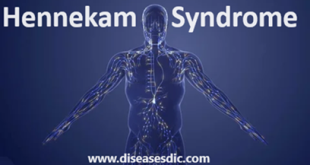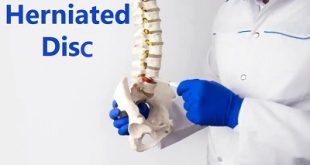Definition
Head lice (Pediculus capitis) are small, wingless, egg laying insects found on the human head. They grow to about 3.5mm (the size of a sesame seed or pin head). It live on the hair and feed by sucking blood from the scalp. They are pale grey in colour before feeding and reddish brown after feeding.
Live eggs (sometimes called nits) are glued to the hair shaft within a distance of 1.5 cm from the scalp. They hatch in 7-10 days as young lice (nymphs). It takes up to ten days for the nymphs to become mature lice and begin laying eggs. Adults are larger than nymphs and a mature female lays up to eight eggs per day.
It cannot jump, fly or swim, Do not carry disease, and Stay on the scalp after swimming or bathing/showering.
How head lice and their eggs Look Like?
The insects are tiny, wingless, move quickly, and are difficult to see. They cannot jump or fly. They are 1 – 2 mm long and greyish brown in color. There are three forms of Lice: the nit, the nymph and the adult.
Forms of head lice
- Nits: Nits are head Lice eggs. They are hard to see and are often confused with dandruff or hair spray droplets. Nits are found firmly attached to the hair shaft. They are oval and usually yellow to white. Nits take about one week to hatch.
- Nymph: The nit hatches into a baby louse called a nymph. It looks like an adult head lo use, but is smaller. Nymphs mature into adults about seven days after hatching. To live, the nymph must feed on blood.
- Adults: The adult lo use is about the size of a sesame seed, has six legs, and is tan to greyish-white. Females lay nits; they are usually larger than males. Adult lice can live up to 30 days on a person’s head. To live, adult lice need to feed on blood. If a louse falls off a person, it dies within two days.
Life cycle of head lice
- They lay their eggs (nits) on the hair shaft around 1.5cm from the scalp. Each louse can live for approximately five weeks, but during that lifetime a female can lay up to 120 eggs.
- The life cycle lasts between 33 and 35 days.
Life cycle of head lice
- The life cycle of head lice begins with eggs being laid, hatching, maturation into adults, mating and egg laying after which the parent head lice die.
- These eggs will hatch in six to ten days continuing the life cycle until the infestation is treated and the cycle is broken.
- The typical louse dehydrates and dies anywhere between 6 and 24 hours when away from the scalp.
Epidemiology
Pediculosis capitis is probably the most common parasitic condition among children worldwide. It is particularly common in resource-poor communities in the developing world, where it affects individuals of all age groups, and prevalence in the general population can be as high as 40%. Children aged < 12 years show the highest prevalence and bear the highest burden of disease.
Transmission of head lice
- It can neither jump nor fly, but crawl from head to head in situations where there is close contact.
- The likelihood of spreading lice via pillows, furniture, cuddly toys and clothes is extremely small.
- Nevertheless, borrowing headwear, brushes, combs, hair accessories and other items from someone who has lice is not recommended.
- Cases of lice are seldom isolated. Without treatment, families and close friends may infect each other repeatedly
How do you get it?
- By close head-to-head contact with someone who already has head lice. Contact is common during play at school and at home (slumber parties, sports activities, at camp, on a playground, etc.).
- By using hats, scarves, combs, brushes, hair ribbons, pillows or towels recently used by someone with head lice.
What are the symptoms of head lice?
Often people who have head lice will have no symptoms for 4 to 6 weeks with their first case.
Symptoms may include:
- Crawling or tickling sensation on the scalp;
- Itchy scalp due to an sensitive reaction caused by the louse’s saliva and feces.
- Scratch marks or small red bumps like a rash.
- Scratching can give rise to secondary bacterial infections on the scalp.
- Swelling of lymph nodes (adenopathy) in the neck can occur in some people due to this infection.
- Feeling of something moving in the hair, irritability, and sores on the head caused by scratching
- The presence of eggs is not a reliable sign of active head lice. Eggs need the warmth and moisture of the scalp to hatch.
How to diagnose the head lice?
Combing the hair by a parent or family member is a good way to look for lice.
- Wash hair well with ordinary shampoo and leave damp. Wet hair slows down the lice, making them easier to remove. Soaking the hair with oil or conditioner from the scalp to the ends may make combing easier.
- In good light, comb the hair with a wide-toothed ordinary comb to straighten and de-tangle the hair.
- Switch to a fine-toothed lice comb. You can buy these combs at pharmacies and can ask the pharmacist for help in choosing one. Work through the hair in small sections, starting with the skin of the scalp/roots at the top of the head and comb through to the ends of the hair.
- Check for moving lice with every stroke. Wipe the comb after each stroke with a tissue and place tissues in a bag.
- If you are not sure if you have found a lice, use clear tape to attach it to a piece of paper. Show this to your health care provider or other person trained to identify live lice.
- Repeat steps 3 to 5 until all of the hair on the head has been combed.
- Tie up the bag with used tissues and throw it in the garbage.
- If moving lice are seen, wash all of the conditioner or oil out and start treatment.
At least once a week, check the scalp especially:
- Around the hairline at the back of the neck
- Behind the ears
- On the crown (top of the head)
Treatments
Chemical treatments or wet combing are the usual ways to treat lice. Talk to your pharmacist, doctor or nurse for advice. Ordinary shampoo or soap will not kill head lice. Do not use fly spray, kerosene or animal treatments, as these may harm children.
Chemical treatments
- Chemical treatments use a special shampoo or lotion (containing insecticide) that kills the head lice and the eggs. Follow the instructions that are supplied with the chemical treatments.
- Always do a second treatment 7–10 days after the first. This is to kill any lice that may have hatched after the first treatment.
The following types of active ingredients were used against head lice:
- Pyrethrins, eg. Amcal Head Lice Foam, Lyban Foam
- Synthetic Pyrethroids (bioallethrin, permethrin), eg. Paralice, Quellada Head Lice Treatment
- Organophosphates, eg. Exolice Medicated Foam, Lice Rid
- Combinations of Herbal and Essential Oils, eg. Quit Nits Natural Head Lice Treatment, Herba Lice
Wet combing
- Wet the hair and scalp with conditioner (this makes it easier to see the lice).
- Use a fine-toothed comb to check for head lice and eggs and to comb them out. It’s best to use a fine metal comb, or a special head lice comb you can get from a pharmacy.
- Comb the full length of the hair, from the scalp to the ends. Work your way around the head so that you have combed all of the hair.
- If you see any head lice or eggs, clean the comb by wiping it on a tissue or a paper towel, or rinse the comb before you use it again.
- After you have combed all of the hair, rinse out the conditioner.
- Repeat the wet combing each week until you don’t find any more head lice or eggs.
Prevention and control
It’s not possible to prevent completely because they’re very common. But there are things you can do to stop head lice from spreading.
- Brush hair every day. This may help kill or injure head lice and stop them from laying eggs.
- Don’t share brushes, combs, headbands, ribbons, hairclips, helmets or hats – anything that touches someone’s head.
- Having short hair – or wearing hair in a ponytail if it’s long – makes it less likely you or your child will catch head lice.
- Children should hang their clothes on their own hook at school.
- Children should keep their clothes apart from other children’s in swimming or sport changing rooms.
- If you do get head lice in your family, everyone that has them should be treated at the same time.
- Let the school and any other close friends know that your child has been treated for head lice.
 Diseases Treatments Dictionary This is complete solution to read all diseases treatments Which covers Prevention, Causes, Symptoms, Medical Terms, Drugs, Prescription, Natural Remedies with cures and Treatments. Most of the common diseases were listed in names, split with categories.
Diseases Treatments Dictionary This is complete solution to read all diseases treatments Which covers Prevention, Causes, Symptoms, Medical Terms, Drugs, Prescription, Natural Remedies with cures and Treatments. Most of the common diseases were listed in names, split with categories.








is there any natural medicines to treat lice?
Yes mam there are natural medicines you can buy from siddha pharmacy. There are some essential oils which gives effectiveness in eradicating head lice. some of them are as follows:
Tea tree oil
Lavender oil
Neem oil
Clove oil
Eucalyptus oil
Aniseed oil
Cinnamon leaf oil
Red thyme oil
Peppermint oil
Nutmeg oil
But before using such oil consult with any siddha doctor for the directions to use and how long to apply.
it’s very nice app because it shows multiinformation about diseases and with examples.So iam very proud for using this app.Please upload the more information about medical treatment.Thank you.